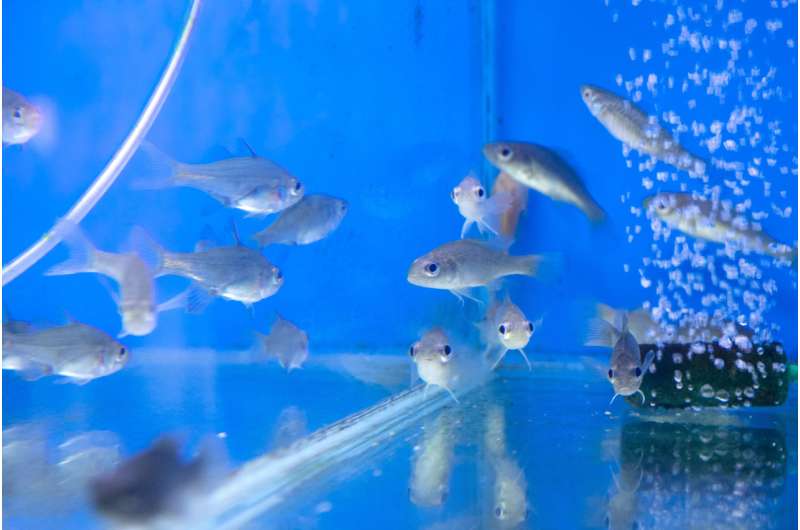A breakthrough for Australia's fish

A research team from the Threatened Species Recovery Hub has made a breakthrough that could help dwindling numbers of Australian freshwater fish species.
Dr. Jabin Watson from the University of Queensland says the innovation will allow small and young fish to get past barriers like culverts.
"Simple things like dams, culverts and weirs can be enough to prevent fish from migrating, accessing habitat and even escaping predators," said Dr. Watson.
"These kinds of barriers are a major contributor to the declines and local extinctions of many Australian fish species."
Native fish in the Murray Darling Basin are estimated to be at only ten per cent of pre European numbers.
"When streams pass through a culvert – the pipes under most roads—the flow is concentrated," Dr. Watson said.
"This fast flow can be impossible for many fish to navigate as they simply can't swim that fast for that long.
"Small and young fish are particularly impacted."
The team used a biohydrodynamics laboratory at UQ to test the swimming ability and behaviour of native fish species.
"Many different types of devices have been trialled in Australia to help fish move past barriers like culverts," Dr. Watson said.
"Baffles are frequently used, with the aim of giving fish areas to rest along the way, but our laboratory testing has shown that the turbulence created can really knock fish about and make them disorientated.
"We've discovered a completely new approach that has proved very successful in laboratory trials, enabling small and young fish to navigate fast flows.
"We have taken advantage of a property of fluid mechanics called the boundary layer to create a channel of slower flowing water along one side of the culvert," he said.
"The boundary layer is a thin layer of slower water generated by a fluid moving across a solid surface, such as the bed and walls of a culvert.
"By adding a beam along the culvert wall, we have added another surface close to the culvert corner.
"The boundary layers from these three surfaces merge to create a reduced velocity channel that is large enough for small fish to swim through.
Dr. Watson said no native fish species have evolved to cope with things like culverts.
"Strategies that work to improve fish passage provide hope for our freshwater species," Dr. Watson concludes.
The research was undertaken by the Threatened Species Recovery Hub of the Australian Government's National Environmental Science Programme, a collaboration of ten leading Australian universities and the Australian Wildlife Conservancy.
It was published in Ecological Engineering.
More information: Jabin R. Watson et al. Utilising the boundary layer to help restore the connectivity of fish habitats and populations, Ecological Engineering (2018). DOI: 10.1016/j.ecoleng.2018.08.008
Journal information: Ecological Engineering
Provided by University of Queensland




















